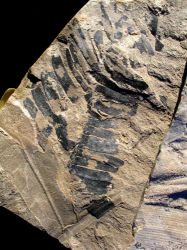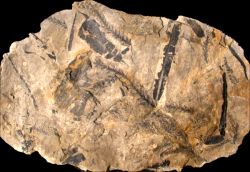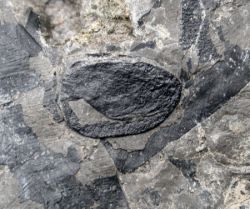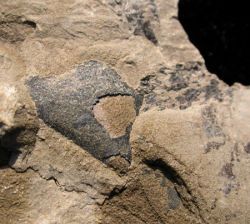Cycases from Yorkshire
Modern cycases grow exclusively in the tropics. They are to be seen
as survivers of a group which had a tremendous 'flowering time' in the Mesozoic
but which was pushed aside by the angiosperms. They were plants with a thick
trunk and with a bundle of rigid, mostly pinnate leaves on top. There were,
however, also plants with undivided leaves.
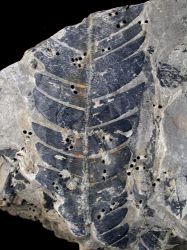 The
male cones consisted of densely packed scales bearing sporangia on the lower
side. The female spikes were placed on top of the trunk and consisted of
pinnate leaves with rows of seeds on both sides or they were a kind of elongated
cones with scales with two seeds on each scale.
The
male cones consisted of densely packed scales bearing sporangia on the lower
side. The female spikes were placed on top of the trunk and consisted of
pinnate leaves with rows of seeds on both sides or they were a kind of elongated
cones with scales with two seeds on each scale.
By far the most common cycas is Nilssonia compta (click on the
photo on the right). The leaves of this plant are divided in segments, which
are sometimes unequal in width.
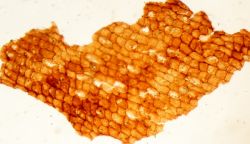 To distinguish this species from other ones, the number of veins per cm (at
the base of the leaflets) is an important data. Nilssonia compta counts
about 15 veins per cm. The veins of this plant are unbranched, just like
those in all other Nilssonia species.
To distinguish this species from other ones, the number of veins per cm (at
the base of the leaflets) is an important data. Nilssonia compta counts
about 15 veins per cm. The veins of this plant are unbranched, just like
those in all other Nilssonia species.
The photo on the left shows a cuticle with stomata of Nilssonia compta.
Note the difference with the cuticle of Nilssoniopteris vittata. Click
on the photo.
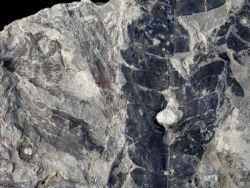 Another
Cycas-like plant, found by us, is Ctenis sulcicaulis (click
on the photo on the right). This was a plant with firm leaves, characterized
by transverse connections between the veins. Another
Cycas-like plant, found by us, is Ctenis sulcicaulis (click
on the photo on the right). This was a plant with firm leaves, characterized
by transverse connections between the veins.
|
